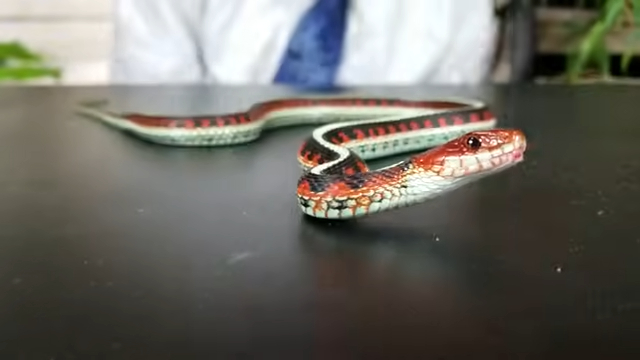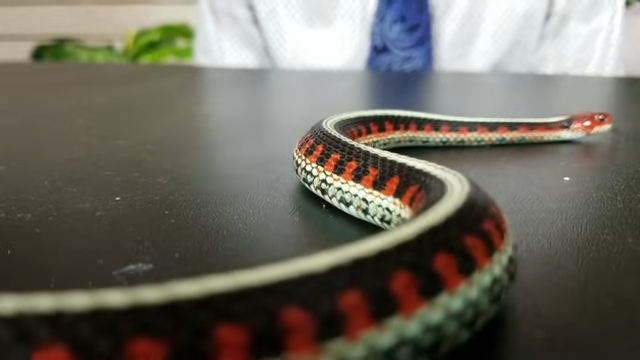
Eastern Garter Snakes & Their Hidden Venom!
Think snakes are just slithery, slimy garden party crashers? Think again, my reptile-loving friend! The Eastern Garter Snake is here to prove you wrong—and maybe even earn a little love. Tiny but tenacious, these common creatures lurking in the Eastern U.S. are packed with surprises, from their venomous bites to some truly wild birthing stats. Yes, venomous. Didn’t expect that, did you?
This is your ultimate guide to Eastern Garter Snakes, where we’ll explore their quirky habits, jaw-dropping traits, and why these humble slitherers deserve your respect (and maybe a little girlish squeal when you see one).
What Exactly is an Eastern Garter Snake?
First up, the basics. These little guys are the OG influencers of the reptile world. Medium-sized, usually topping out around 27 inches, they come dressed in a variety of patterns. Think classic yellow stripes, spots, or even a funky checkerboard style for when they’re feeling extra sassy.
But don’t be fooled. They’re not called “Garter” snakes because they keep your grandma’s stockings up. The name actually comes from their stripes, which resemble the decorative (and practical) garters men once used to hold up socks. Fashion icon and closet minimalist in one, am I right?
Oh, and fun fact: garter snakes love a good wetland. Got a marsh, meadow, or even a damp spot near your garage? You might already have a new neighbor.
The Secret They Don’t Want You to Know
Okay, here’s where it gets juicy. Despite their innocent appearance, garter snakes are venomous. Yup, the “harmless” snake from your childhood encounters out by the swing set might’ve been packing venom. Before you freak out, hear me out—it’s not as intense as a cobra or rattlesnake.
Eastern Garter Snakes don’t have the fancy hypodermic fangs we associate with venom delivery. Instead, their venom is geared toward taking down frog and toad prey, not humans. They deliver it by chewing (yep, chewing). Most humans barely notice an effect—but occasionally, someone gets itchy, bloody, or even a little burned from the bite, like our unlucky hero from the
[YouTube episode breaking this secret].
Still, allergic reactions aside, you’re safe unless you decide to get cozy with one in your pocket.
Why Nature Equipped Them With Venom
Turns out, life is hard when you’re a snake that fits snugly in a hawk’s talons or a raccoon’s claws. Venom helps garter snakes defend themselves—not against you but against amphibians they plan to eat. Good luck hopping away, little frog.
And they don’t stop there! If a predator gets too close, Eastern Garter Snakes also release a gross-smelling musk. Think Eau De “Ew.” Also, they expand their bodies to appear larger, because hey, confidence is everything—even in the scaly world.
They’re Basically Super Snake Moms
Brace yourself for this one. Garter snakes are basically the overachieving moms of the reptile kingdom. Instead of laying eggs like many reptiles, they keep them inside their bodies until they hatch, then give “live birth” to up to a record-breaking 98 baby snakes in one go.

Yes, you read that right. NINETY. EIGHT. Imagine giving birth to nearly a hundred tiny wriggly noodles, all ready to hunt their own food from day one. These babies don’t stick around for Mama’s cooking—they’re independent as soon as they’re born. Now that’s tough love.
Sharing Winter Hideouts With Frenemies
Garter snakes also have a knack for making… unlikely friends. During the winter, instead of hibernation (it’s called brumation in snake speak—fancy, huh?), they sometimes chill in dens with other snake species. Yes, even venomous copperheads and rattlers. Hundreds and, in some cases, THOUSANDS of snakes all packed together in one Airbnb. Imagine being invited to that sleepover.
Before You Judge, Consider This…
Sure, Eastern Garter Snakes have some quirks—musk bombs, venom, and a love for mass gatherings. But they’re also fascinating, highly adaptable creatures that prove just how cool nature can be.
Besides, they’re your backyard pest control system, tackling insects, rodents, frogs, and toads. Not to mention, they symbolically remind us that not everything that slithers in the garden is out to take a bite out of you (well, maybe chew a little).
What’s more, garter snakes are pretty chill housemates. They won’t bother you, as long as you don’t bother them first. Keep your distance, marvel at their beauty from afar, and maybe appreciate the role they play in your ecosystem.
Spot One? Give Them a Nod
Next time you see an Eastern Garter Snake on your hike or in your yard, don’t turn tail and scream. Take a moment to admire this snake’s intricate patterns, its clever defense tactics, and its massive contribution to keeping your local frog population in check.
These underdog reptiles deserve a place in our hearts (and yes, maybe our Instagram feeds, too). Snakes with secrets always make the best stories, don’t you think?
FAQ: Eastern Garter Snakes
What do Eastern Garter Snakes look like?
Eastern Garter Snakes are medium-sized snakes, usually around 27 inches long. They sport yellow stripes, spot patterns, or even a checkerboard style. Think classic, understated snake fashion with a dash of flair!
Are Eastern Garter Snakes venomous?
Surprisingly, yes! Eastern Garter Snakes have venom, but it’s mild and mostly effective on their prey—frogs and toads. They chew to deliver it, so for humans, the effects are usually minor, like an itch or slight irritation. Unless you’re allergic, their venom isn’t dangerous to us.
Where do Eastern Garter Snakes live?
You’ll find these snakes in wetlands, meadows, marshes, and damp areas—like your backyard or near your garage. They’re simple creatures who love cozy spots with a bit of moisture nearby.
What do Eastern Garter Snakes eat?
Their menu mainly consists of frogs, toads, and other small creatures. They use their venom to subdue their prey, so hopping away isn’t much of an option for their dinner.
How do Eastern Garter Snakes defend themselves?
When threatened, they release a gross-smelling musk (nature’s version of “back off”) and puff up their bodies to appear larger. Confidence is key, even for snakes!
Do Eastern Garter Snakes lay eggs?
Nope! These overachievers give live birth to their babies—up to 98 in one go. Yep, nearly 100 baby snakes wriggling into independence right out of the womb.
Are they social snakes?
Kind of. During winter, they brumate (that’s “snake hibernation”) and often share dens with other snakes, including venomous ones like copperheads and rattlesnakes. Imagine a slithery, scaly winter sleepover with thousands of friends.
Should I be worried if I see one?
Not at all! Eastern Garter Snakes are harmless if you leave them alone. They’re nature’s pest control, snacking on insects, rodents, and frogs. Just give them some space and appreciate their role in the ecosystem.
Can I handle them?
They’re best admired from afar. If you do decide to pick one up (why, though?), remember they might release that infamous musk or give a little warning bite.
Do they only live in the Eastern U.S.?
While they’re more common in the Eastern U.S., garter snakes can be found in other wetland-rich areas too. They’re the adaptable, “go with the flow” type of serpents.
